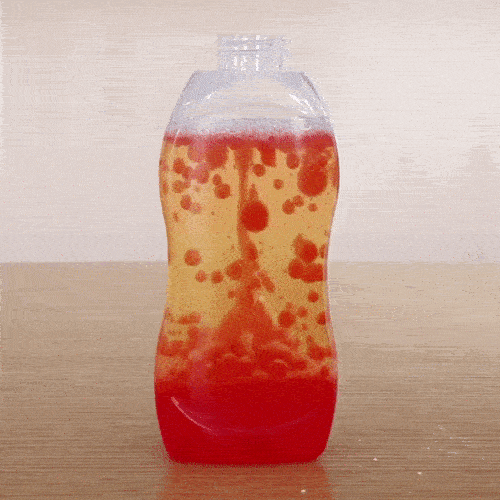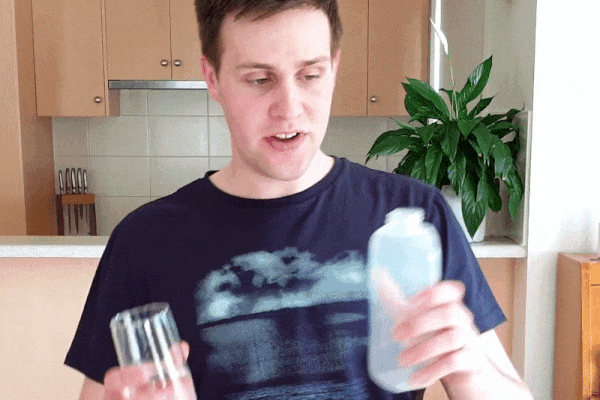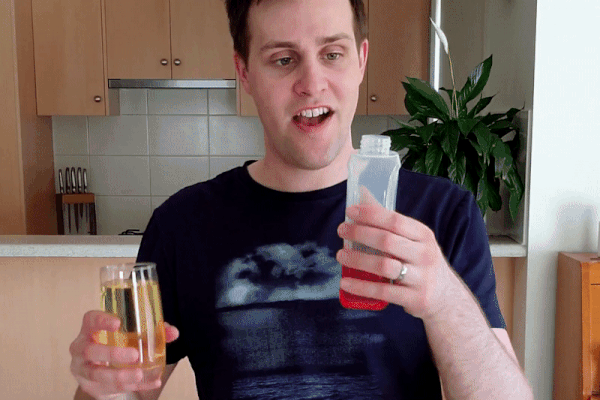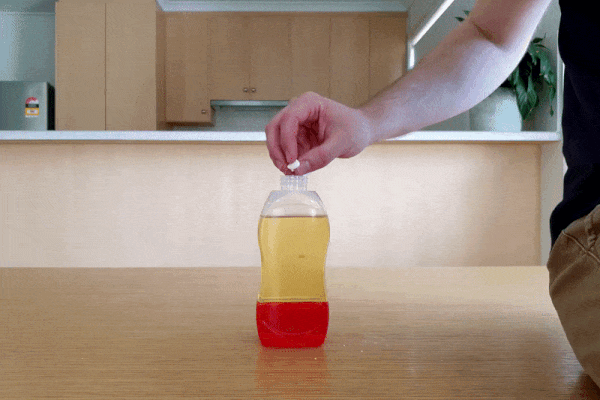


Construct your own reusable lava lamp with a little help from the scientific principles of density and molecular polarity.
G'day primates! This groovy science experiment was brought to you by our good friend in Australia:
 To visit his YouTube channel, click on the banner above. Or, to watch the full video on even more ways to make your own scientific lava lamp,
click here.
To visit his YouTube channel, click on the banner above. Or, to watch the full video on even more ways to make your own scientific lava lamp,
click here.

First, carefully pour all of the water into the bottle. You'll want to do this over a sink or an area (like outside) that can afford to get a little wet.
A funnel can be super helpful for this step, but you can also use a measuring cup or a drinking glass, like Simon. Also, if you don't have a 500 mL bottle, don't fret! You can use just about any container, filling it about a third of the way with water.

Now, add some color to your lamp by putting in a few drops of food coloring and swirling the bottle gently to stir. Remember, as always with food coloring, less is more. Simon put about ten drops of red food coloring into his lava lamp--perfect!

Just as in step one, pour all of the oil into the bottle. Oil can be really messy, so make sure you're doing this in a safe area.

And finally, it's time to get groovy. Snap your Alka Seltzer tablets into a few pieces with your fingers. Then, drop all the pieces into the bottle and watch as the reaction propels the "lava" through your homemade lava lamp. Far out!
Density is a measure of how much mass a given substance contains per unit of volume. For example, the density of water is close 1 g/mL (grams per millileter). This means that if you had 5 mL of water, you'd have just about 5 g of water. Pretty cool, right? Density is also important because substances that are less dense tend to "float" on denser ones, since the force of gravity is weaker on objects with less mass.
Polarity has to do with the way electrical charge is distributed over a molecule. Scientists say a molecule is polar if it has an uneven electrical charge (think of Earth's North and South Poles) and non-polar if it has an evenly distributed charge. This uneven charge leads polar molecules to have positive sides and negative sides, just like magnets. A water molecule is a great example of a polar molecule, with a strong negative side and a strong positive side. On the other hand, fats like vegetable oils are made up of non-polar molecules.
As in magnets, when the positive side of a molecule meets up with the negative side of another, the two are strongly attracted. As a result, polar molecules tend to arrange themselves in patterns where their positive sides are only touching other molecules' negative sides. Polar molecules like this pattern so much that, even if a non-polar substance is stirred in, the polar molecules try stick to each other and form the pattern again, instead of combining with the non-polar molecules.
Because of this, scientists also call polar molecules hydrophilic (water-loving), since they're able to form this pattern and combine with water. Similarly, non-polar molecules can be called hydrophobic, since they cannot form this pattern and water molecules tend stay separate them. While two or more hydrophilic substances (or hydrophobic) substances will usually combine easily, try mixing a hydrophilic and hydrophobic substance and you'll be stirring forever!
If you haven't done a similar science experiment before, you might've already witnessed a hydrophobic substance meeting up with a hydrophilic one at your dinner table: many salad dressings contain both oil (with non-polar, hydrophobic molecules) and vinegar (with polar, hydrophilic molecules), which form two distinct layers when the bottle is allowed to sit for a while. What decides where each layer will end up (top or bottom)? You guessed it: density!
You must be logged in to comment.